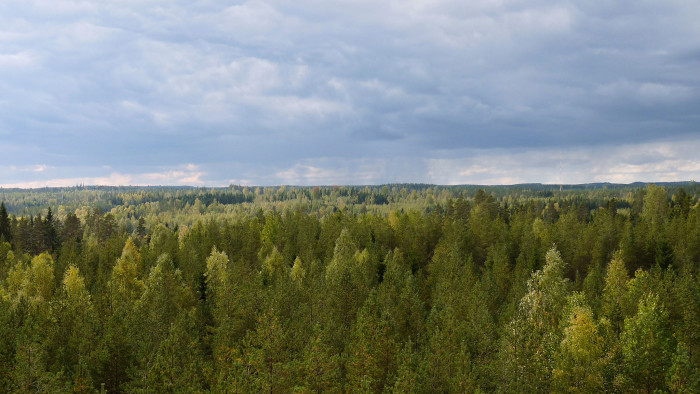Fir weather friends?

Simply sign up to the Life & Arts myFT Digest -- delivered directly to your inbox.
Imagine a Scandinavian forest on a hot summer’s day. The rich smell of pine fills the air – and so does a thick haze. The coniferous forests that stretch across the northern latitudes of Eurasia and North America are the world’s biggest biological source of haze, as the trees emit volatile chemicals – pinene and other terpene compounds – which morph mysteriously into a visibility-lowering aerosol of microscopic particles in warm weather.
This reaction is important for climate because these tree-derived aerosol particles may have a cooling effect, reflecting back sunlight or acting as nuclei for cloud formation, though scientists are only beginning to understand the complex chemistry involved.
A study by European and American researchers, published in Nature, explains how. As Joel Thornton of the University of Washington puts it: “In many forested regions you can go and observe particles apparently form from thin air . . . They just appear.”
The team took measurements in Finnish pine forests and then simulated the particle formation at Jülich research centre in Germany. The results show how a particle can emerge and expand rapidly – up to 100 nanometres in diameter a day – through the oxidation of terpenes emitted by the trees. A previously unsuspected chemical chain reaction takes place as the growing molecules encounter atmospheric oxygen, particularly the highly oxidising ozone (O3). Whenever the terpene-derived molecule adds an oxygen atom from the air, this knocks off a hydrogen atom, which leaves a vacancy for another oxygen atom. The particles also get bigger by clumping together as they grow.
“I think unravelling [this process] is going to have some profound impacts on how we describe atmospheric chemistry generally,” Thornton says. Other types of forest emit similar vapours and he believes that rapid oxidation may apply to a broad range of atmospheric compounds: “A lot of missing puzzle pieces will start to fall into place once we incorporate this understanding.”
Human activities may affect the natural haze-making process in two ways. First, the quantities of volatile compounds emitted by trees increase as temperatures rise, so a warmer climate could itself produce more forest haze. Second, man-made pollution increases the amount of ozone at low levels of the atmosphere – this too may stimulate haze formation.
Although both these effects could mitigate the impact of global warming, more research will be needed to establish how powerful the results might be.
To comment on this article please post below, or email magazineletters@ft.com
Comments